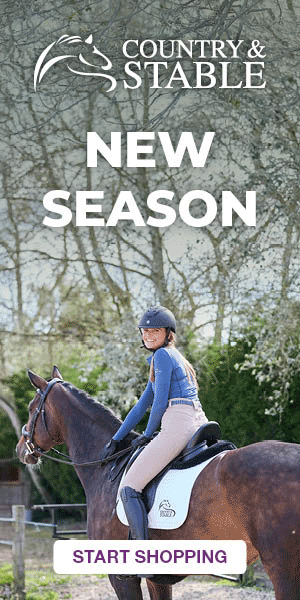How long does it take for horses to accept a new horse?
Did you know your new horse may take anywhere from a week to six months to fully settle in? The adjustment period depends on their temperament, history, and how smoothly the transition is managed.
Always quarantine new arrivals for at least 14 days to prevent the spread of diseases such as strangles and equine flu. Matching their previous feeding times and living conditions also helps them feel more secure.
Horses used to travel may settle faster, but every horse benefits from a calm environment and slow, steady introductions. This guide will walk you through the key steps to help your horse feel safe, relaxed, and ready for that first ride.
Prepare Before the Move
Check health records and vaccinations
Scheduling a veterinary check-up before bringing your horse home ensures they are fit for travel and transition.
Request complete vaccination records and confirm all vaccines are up-to-date, especially for tetanus and equine influenza. The law requires that all vaccinations administered by a vet must be recorded in your horse’s passport. Furthermore, arrange for strangles testing before the horse travels to their new location.
Verify that the current owner’s details appear on the passport and arrange microchip registration under your name if applicable.
Set up a safe and familiar environment
Thoroughly prepare your horse’s new living space before arrival. If stabling your horse, ensure the stable is bedded down with appropriate bedding and equipped with water, hay nets, and familiar toys.
For field-kept horses, check all fencing is secure and safe. Consequently, this attention to detail helps minimise potential hazards and provides immediate comfort upon arrival.
Gather previous feeding and care routines
Understanding your horse’s existing routine is vital for a smooth transition. Ask the previous owner detailed questions about:
- Current turnout schedule and stabling arrangements
- Feeding regimen including types and quantities of feed
- Bedding preferences
- Exercise routine and workload
- Any allergies or sensitivities
Maintain the same feed initially, as horses have sensitive digestive systems and sudden changes can lead to health issues like colic. Subsequently, any necessary changes should be implemented gradually over time.
Plan transport and arrival time carefully
Ensure your horse’s passport travels with them—this is a legal requirement. Allow plenty of time for loading and transport, never rushing this potentially stressful process.
Pack familiar hay and feed for the journey to maintain dietary consistency. Moreover, consider timing the arrival carefully so your horse has daylight hours to explore their new surroundings. Before departure, map out veterinary practises along your route and have emergency contact details readily available.
First Days at the New Home
The arrival day marks a critical moment in your relationship with your new horse. How you handle these first few days will set the tone for your future partnership.
How long should you let a horse settle in before riding?
The settling period varies widely depending on your horse’s temperament. On the whole, horses can take anywhere from one week to six months to fully settle into their new environment.
Older or well-travelled horses may settle within several weeks, while nervous or excitable horses might require several months.
Let your horse explore the surroundings
- Lowered head position
- Decreased movement
- Softening of the eye
Avoid riding too soon
Most experts recommend waiting at least 24 hours before attempting to ride your new horse, albeit many recommend a minimum of one to two weeks.
This allows time for your horse to develop trust in both you and their surroundings. When you do start riding, begin in a controlled environment like an arena rather than on unfamiliar trails.
Use calming techniques for horses
Familiar exercises can help your horse relax. Static flexion or gentle stretching can serve as a “tension barometer”—if your horse resists bending when they know the exercise, they may still be anxious.
Establishing clear boundaries while leading is also essential, ensuring your horse walks in a straight line without pushing through you.
Monitor eating, drinking, and behaviour
Essentially, a horse’s water and food intake are key indicators of their wellbeing. Horses may reject unfamiliar water due to changes in pH levels, so monitoring consumption is crucial.
Positive signs that your horse is settling include eating well, drinking normally, showing interest in daily activities, and maintaining normal elimination patterns.
Building Trust and Routine
After the initial adjustment period, building a strong foundation of trust becomes your primary focus.
Once your horse has had time to explore their surroundings, establishing consistency will help them develop confidence in both you and their new environment.
Establishing routines for comfort and security
Horses are creatures of habit who crave predictability. Unpredictable environments can be genuinely unsettling for them, whereas consistent routines help them predict what’s happening and when.
Regular feeding times, turnout schedules, and exercise patterns create a sense of security that allows your horse to relax.
Give your new horse at least a couple of weeks to settle in before introducing new training experiences or travelling, as this allows them time to build confidence in you and their surroundings.
Bond through grooming and hand-walking
Hand-walking also reinforces ground manners and trust, especially when calmly navigating unfamiliar objects together.
Use food rewards to build positive associations
Food rewards create powerful learning associations for horses.
The better the reward, the deeper the associative learning. Treats are particularly valuable when your horse performs a rare or difficult task that goes against their natural instincts. However, use food rewards judiciously—they’re too powerful to use frequently.
For everyday training, non-edible rewards like wither scratching or verbal praise work well. Always ensure proper “food manners” by only giving treats when your horse displays appropriate, non-pushy behaviour.
Set clear boundaries and personal space
Boundaries aren’t about control but creating clarity and safety. They serve as reference points, helping your horse understand expectations.
Introducing to the Herd and Riding
Safely introducing your new horse to herd members marks a crucial step in their adjustment process. After completing the quarantine period of at least 14 days, you can begin social integration with careful planning.
Integrating a horse into a herd safely
Horses naturally form tight-knit groups with minimal conflict over resources. Introducing a new horse disrupts the herd structure, often causing aggression. Unlike feral horses, domestic ones face space and resource constraints, making introductions more challenging.
Prepare the turnout area by removing hazards and ensuring secure fencing. Consider removing hind shoes, as studies show barefoot horses are less likely to suffer fractures from kicks.
Start with one companion at a time
The buddy system proves most effective for integrating new horses. First, allow your horse to interact with the established herd over a barrier for one to two days. This adjacent field or stable setup permits safe interaction without physical contact risks.
Eventually, select a calm, easy-going member from the herd as your horse’s first companion. Once they form a bond, this established member can help your new horse integrate with others.
Generally, after several days together, they can return to the main herd as a pair, with your new horse feeling supported by their friend.
How to help a new horse settle in before riding
Groundwork forms an excellent foundation before riding begins. Start with simple handling exercises, then progress to lunging and long reining. Simultaneously, teach voice commands for transitions, helping you and your horse understand each other before you mount.
Use familiar tack and equipment
When first saddling your new horse, move slowly and deliberately. Allow them to smell the equipment before placing it on them. Furthermore, check that all tack fits properly, as ill-fitting equipment can cause discomfort and behavioural issues.
Ride in a controlled environment first
For initial riding sessions, choose an enclosed area like an arena. Begin with simply walking for several minutes to understand how your horse responds to your aids. In fact, it’s beneficial to have someone hold your horse during mounting. Once comfortable at a walk, progressively introduce other gaits after ensuring you can work together safely at each level.
Conclusion
Bringing a new horse home is both an exciting and challenging experience. Your patience and understanding during the adjustment period are crucial, as each horse adapts differently—some within weeks, others over several months.
Preparation is key. Reviewing health records, providing a safe environment, and maintaining familiar routines help foster a sense of security. In the early days, observe behaviour closely and avoid rushing into riding to allow trust to develop. Consistent boundaries and positive reinforcement also support a confident, secure horse.
3Adapt your expectations to suit your horse’s individual temperament and history. Flexibility and attentiveness to their signals are vital. While gradual integration improves the likelihood of success, small milestones—such as a calm greeting or relaxed grooming session—are meaningful signs of progress.

Welcome to Sell Your Horse, a platform dedicated to connecting equestrians with each other, making horse buying and selling easier and more transparent. With a focus on technology and community-building. My mission is to help like-minded equestrians find the right connections, share knowledge, and build a trusted equine network.






 Featured Listings
Featured Listings
 Adverts
Adverts
 Horses For Sale
Horses For Sale
 Tack & Equipment
Tack & Equipment
 Horseboxes & Trailers
Horseboxes & Trailers
 Equine Properties
Equine Properties
 4x4 Vehicles
4x4 Vehicles
 Horses For Loan
Horses For Loan
 Horses Wanted
Horses Wanted
 Stallions at Stud
Stallions at Stud
 Equine Services
Equine Services
 Riding Holidays
Riding Holidays

